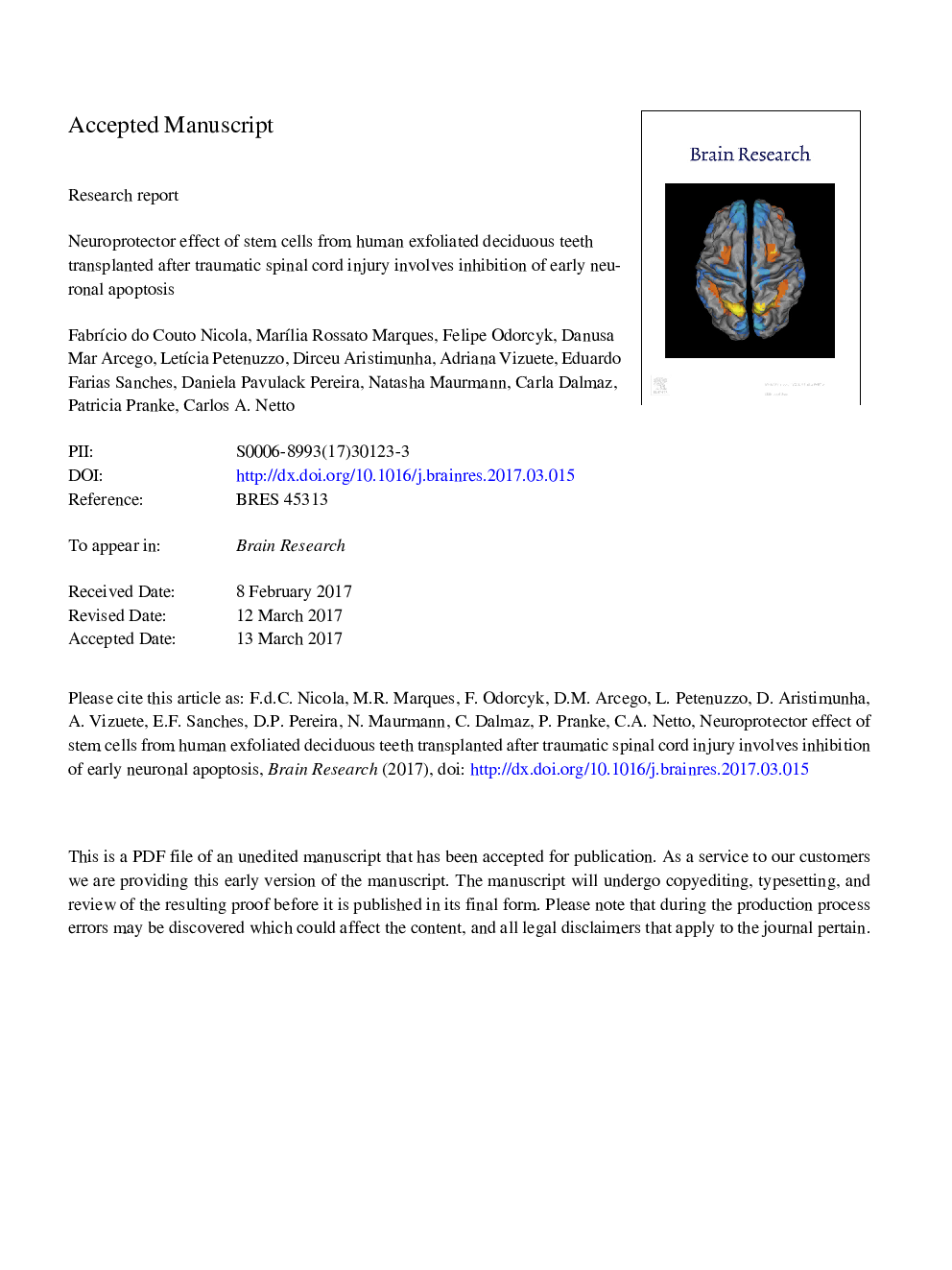| Article ID | Journal | Published Year | Pages | File Type |
|---|---|---|---|---|
| 5736655 | Brain Research | 2017 | 39 Pages |
Abstract
Stem cells from human exfoliated deciduous teeth (SHED) transplants have been investigated as a possible treatment strategy for spinal cord injuries (SCI) due to their potential for promoting functional recovery. The aim of present study was to investigate the effects of SHED on neuronal death after an experimental model of SCI. Methods: Wistar rats were spinalized using NYU impactor®. Animals were randomly distributed into 4 groups: Control (Naive) or Surgical control, Sham (laminectomy with no SCI); SCI (laminectomy followed by SCI, treated with vehicle); SHED (SCI treated with intraspinal transplantation of 3 Ã 105 SHED, 1 h after SCI). Functional evaluations and morphological analysis were performed to confirm the spinal injury and the benefit of SHED transplantation on behavior, tissue protection and motor neuron survival. Flow cytometry of neurons, astrocytes, macrophages/microglia and T cells of spinal cord tissue were run at six, twenty-four, forty-eight and seventy-two hours after lesion. Six hours after SCI, ELISA and Western Blot were run to assess pro- and anti-apoptotic factors. The SHED group showed a significant functional improvement in comparison to the SCI animals, as from the first week until the end of the experiment. This behavioral protection was associated with less tissue impairment and greater motor neuron preservation. SHED reduced neuronal loss over time, as well as the overexpression of pro-apoptotic factor TNF-α, while maintained basal levels of the anti-apoptotic BCL-XL six hours after lesion. Data here presented show that SHED transplantation one hour after SCI interferes with the balance between pro- and anti-apoptotic factors and reduces early neuronal apoptosis, what contributes to tissue and motor neuron preservation and hind limbs functional recovery.
Keywords
Related Topics
Life Sciences
Neuroscience
Neuroscience (General)
Authors
FabrÃcio do Couto Nicola, MarÃlia Rossato Marques, Felipe Odorcyk, Danusa Mar Arcego, LetÃcia Petenuzzo, Dirceu Aristimunha, Adriana Vizuete, Eduardo Farias Sanches, Daniela Pavulack Pereira, Natasha Maurmann, Carla Dalmaz, Patricia Pranke,
